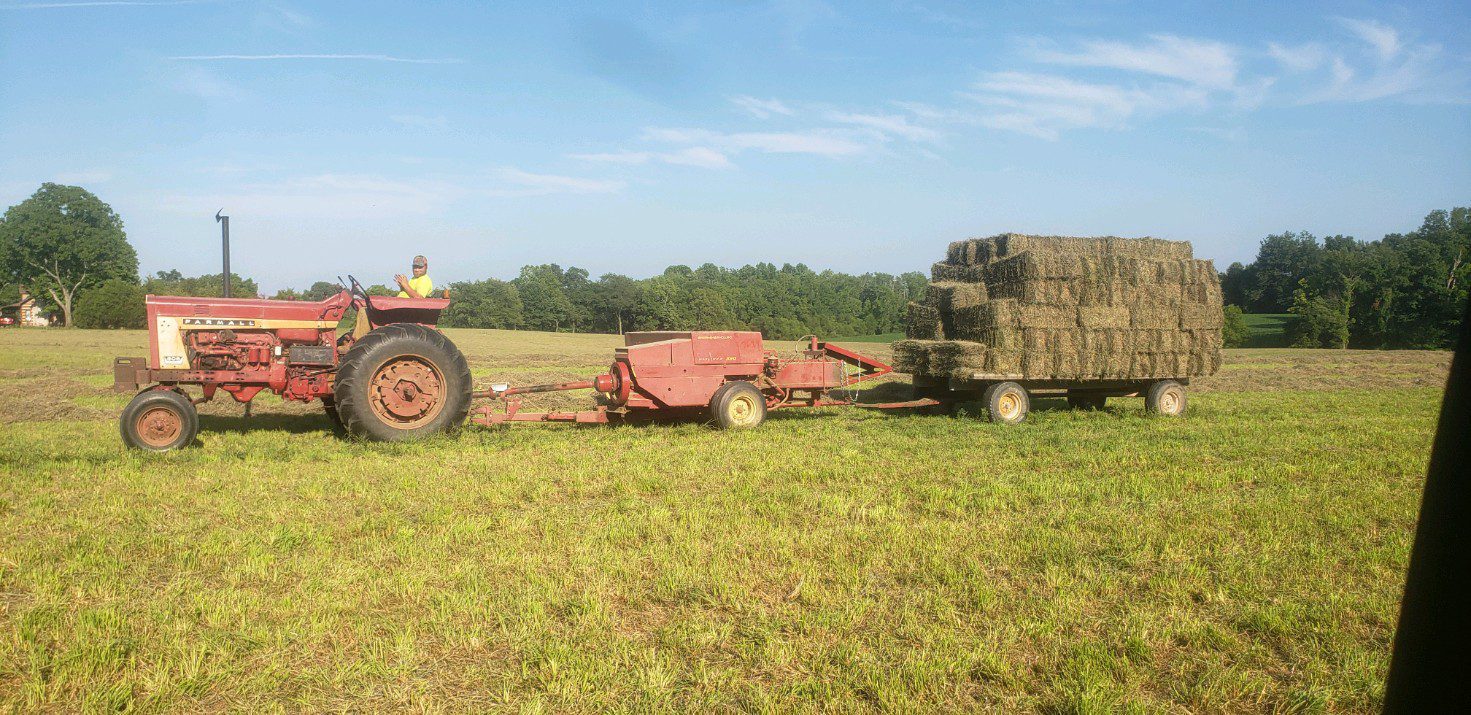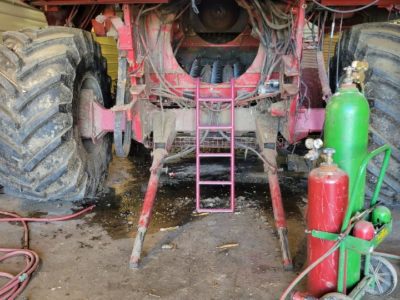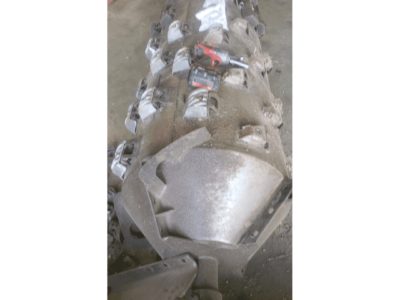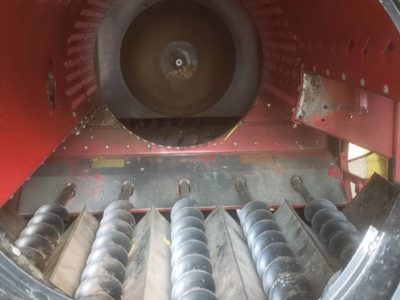 Despite planting delays due to rain followed by hot, dry weather, our crops don’t look too bad.
Despite planting delays due to rain followed by hot, dry weather, our crops don’t look too bad.
Summer conditions have been tough in our area of the U.S. Midwest. Between our first cutting of hay in mid- to late-May and our second hay cutting the second week of July, we had no rain. At the same time, temperatures ranged from 29 to 35°C, or 85 to 95°F. Since then, we’ve caught a couple of little rains that have helped, though the fields are still very dry.
 Those rains have helped our high oleic soybeans, which were planted earlier, as they set and fill pods. We hired our local input supplier to apply fungicide to these soybeans early in the reproductive phase to protect and even boost yield potential. Though my oldest son and I do most of our work ourselves, the cooperative has a sprayer with a 36.6-meter, or 120-foot, boom, so they can cover more field area with fewer tracks through the field.
Those rains have helped our high oleic soybeans, which were planted earlier, as they set and fill pods. We hired our local input supplier to apply fungicide to these soybeans early in the reproductive phase to protect and even boost yield potential. Though my oldest son and I do most of our work ourselves, the cooperative has a sprayer with a 36.6-meter, or 120-foot, boom, so they can cover more field area with fewer tracks through the field.
Our food-grade soybeans were planted much later, but the small rains in July have helped them grow and start to flower. When they reach the appropriate growth stage, we plan to have fungicide applied to them, as well, to protect yield potential and quality.
 Because we missed getting rain at key growth points, total yield potential has been hurt. But if we keep getting rains like we had later in July, yields for both our high oleic and food-grade soybeans will be ok.
Because we missed getting rain at key growth points, total yield potential has been hurt. But if we keep getting rains like we had later in July, yields for both our high oleic and food-grade soybeans will be ok.
We also applied a similar fungicide application to our corn as it started reproductive stages. The corn is shorter than average, and we can tell that ears are smaller than average. The hot, dry weather will reduce corn yield, but we still want to protect crop quality as the ears fill. We have a neighbor who owns a sprayer with clearance that is high enough to go over the corn, and we hire him to apply fungicide on our corn.
 For both crops, I prefer applying fungicide with ground rigs to aerial application because ground rigs use more water. These applications are more likely to push the fungicide all the way to the bottom leaves of the crop canopy.
For both crops, I prefer applying fungicide with ground rigs to aerial application because ground rigs use more water. These applications are more likely to push the fungicide all the way to the bottom leaves of the crop canopy.
The small rains have made a difference to our hay and pastures. We expect to do a third cutting of hay around August 20. However, the dry period in June was hard on the pasture where our few cattle graze. We’ve already had to start supplementing their diets with hay, which we usually just do during the winter.
We also have been installing field tile in wheat fields for other farmers in our area. These winter wheat fields were harvested in early July. The tile, plastic tubing with slits, will help the soil in these fields drain better during wet seasons like we had this past spring. Installing the tile now allows them time to get these fields ready for the next crop.
We have also started getting ready for harvest. We’ve taken our combine apart to fix any problems and ensure it is in good working condition. If everything cooperates, we expect to start harvesting our high oleic soybeans in late September.






